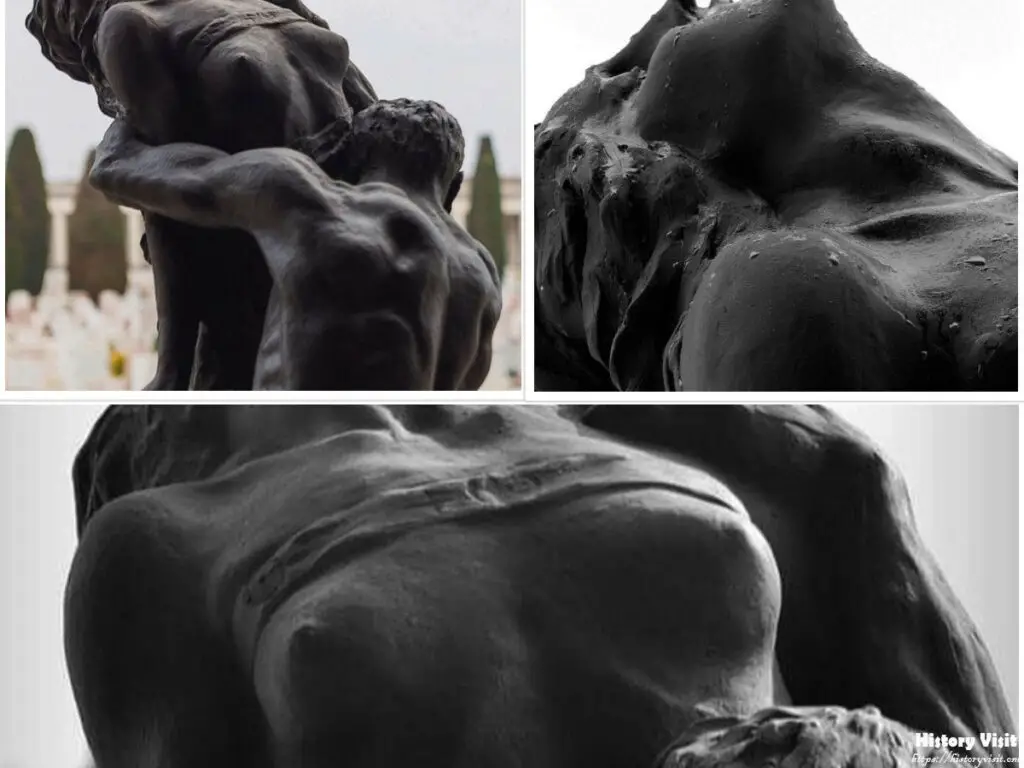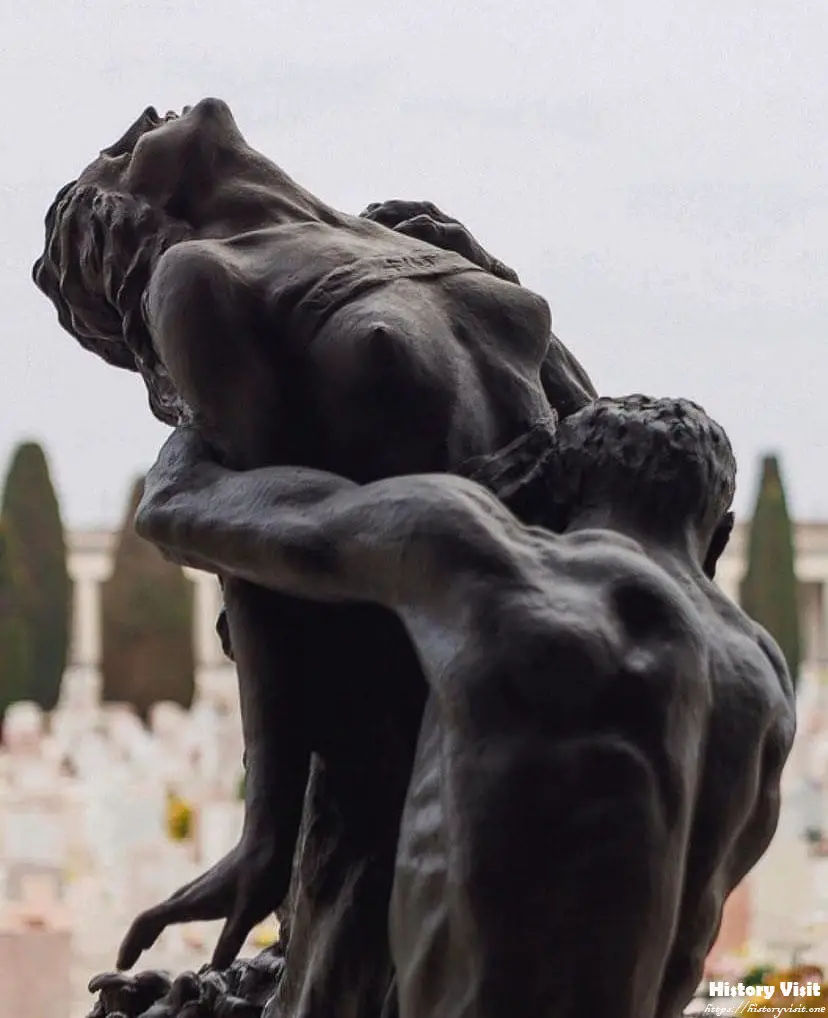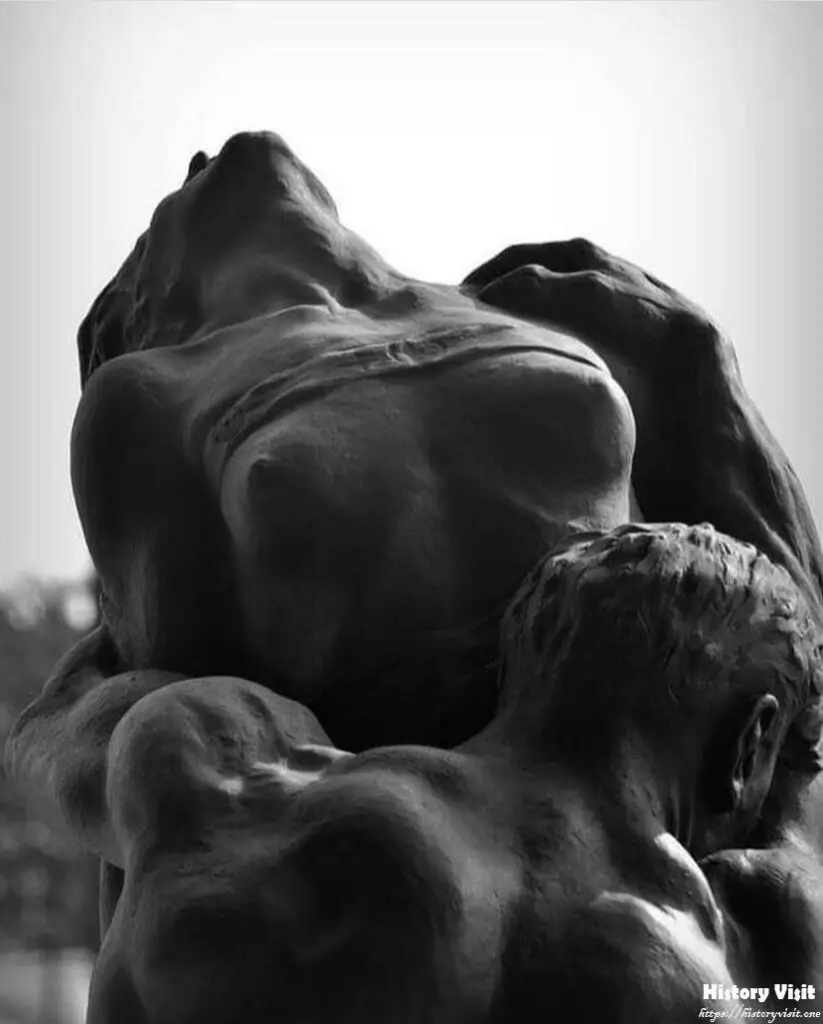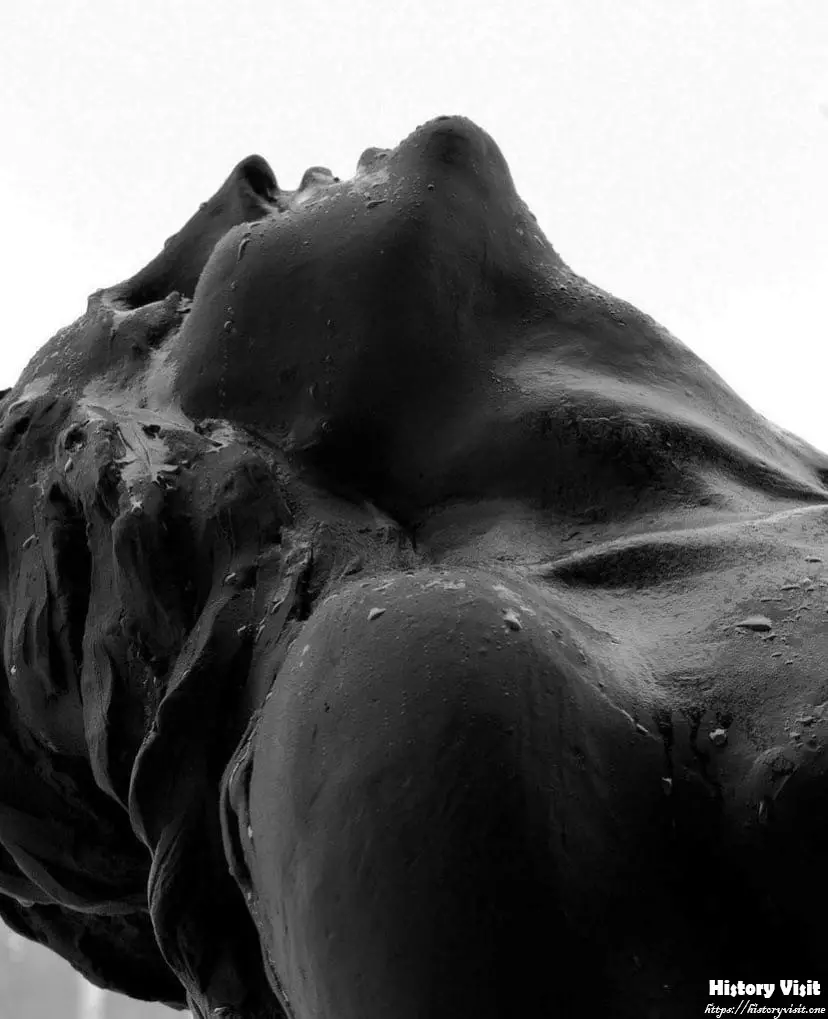Ruperto Banterle’s “Fleeing Soul”: The Haunting Sculpture

Introduction
Have you ever visited a cemetery and been struck by the beauty and emotion of the sculptures you find there? Sometimes, these works of art tell stories that are both powerful and moving. One such story is told through the sculpture “Fleeing Soul,” created by Ruperto Banterle in 1914. Located in the Monumental Cemetery of Verona, this piece is not just a simple grave marker but a masterpiece of Italian funerary art.
Ruperto Banterle, an Italian sculptor born in 1889, was known for his incredible ability to capture the human form in moments of deep emotion. His works, like “Fleeing Soul,” reflect a deep understanding of the human experience, especially in times of grief and sorrow. The Monumental Cemetery of Verona, where this sculpture is housed, is a place of great cultural and historical significance, with many important works of art.
In this article, we will explore the life and work of Ruperto Banterle, focusing on his famous sculpture “Fleeing Soul.” We will delve into the emotional power of the piece, its place in the broader context of Italian funerary art, and why it remains such a significant work today. By the end, you will have a deeper appreciation for Banterle’s artistry and the rich history of the cemetery where his masterpiece can be found.
Who Was Ruperto Banterle?
Ruperto Banterle was born in 1889 in Verona, Italy, a city known for its rich artistic heritage. From a young age, he showed a talent for sculpture, which led him to pursue formal training. His early years were marked by a deep interest in the human form, which he explored through various mediums. Banterle was influenced by the great Italian sculptors who came before him, yet he brought his own unique vision to his work.
As Banterle matured as an artist, his style evolved, becoming more expressive and focused on capturing emotion. He was particularly interested in the themes of life, death, and the human soul. These themes are evident in many of his works, which often depict figures in moments of intense feeling. Despite his growing reputation, Banterle remained deeply connected to his roots in Verona, where he spent much of his life.
Over the course of his career, Banterle created numerous works, but none are as famous or as powerful as “Fleeing Soul.” This sculpture not only exemplifies his skill as a sculptor but also his deep understanding of the human condition. Banterle’s ability to convey emotion through the human form is what makes his work stand out, even today.
The Creation of “Fleeing Soul”

The year 1914 was a pivotal one for Ruperto Banterle. It was during this time that he created “Fleeing Soul,” a work that would come to define his career. The sculpture was commissioned for the Monumental Cemetery of Verona, a place known for its elaborate and expressive funerary art. The cemetery, which dates back to the 19th century, is home to many other significant works, but Banterle’s sculpture stands out for its emotional intensity.
“Fleeing Soul” depicts a figure caught in a moment of desperate escape. The body is twisted, as if the soul is trying to free itself from the earthly bonds that hold it. The expression on the figure’s face is one of anguish and fear, conveying a sense of urgency and despair. Banterle used his deep understanding of the human form to create a sculpture that feels alive, as if the figure could spring into motion at any moment.
The creation of “Fleeing Soul” was no small feat. Banterle spent countless hours working on the piece, refining every detail until it was perfect. He was known for his meticulous attention to detail, and this is evident in the sculpture’s intricate lines and realistic textures. The final result is a work of art that not only captures a moment in time but also evokes a deep emotional response from those who view it.
The Emotional Power of “Fleeing Soul”

One of the most striking aspects of “Fleeing Soul” is the emotional power it conveys. Banterle’s sculpture is not just a representation of a figure in motion; it is a portrayal of the human experience. The figure’s contorted body and anguished expression communicate a sense of struggle and desperation that is universally understood. This is what makes the sculpture so powerful – it speaks to the viewer on a deeply emotional level.
The way Banterle captured the tension in the figure’s body is particularly impressive. Every muscle appears strained, as if the figure is fighting against an invisible force. The twisting motion of the body adds to the sense of movement, making the sculpture feel dynamic and alive. This sense of motion is what gives “Fleeing Soul” its emotional impact, as it captures a moment of intense struggle that many can relate to.
Moreover, the sculpture’s location in the Monumental Cemetery of Verona adds to its emotional weight. The cemetery is a place of mourning and reflection, where people come to remember their loved ones. “Fleeing Soul,” with its portrayal of a soul in torment, serves as a poignant reminder of the pain and loss that accompanies death. It is a work that invites contemplation and introspection, making it a powerful presence in the cemetery.
The Role of Funerary Art in Italian Culture
In Italian culture, funerary art has long been a way to honor the dead and express the emotions associated with loss. The Monumental Cemetery of Verona, where “Fleeing Soul” is located, is a testament to this tradition. The cemetery is filled with elaborate tombs and sculptures, each one telling a story about the person it commemorates. These works of art are not just markers of death; they are expressions of love, grief, and remembrance.
Funerary art in Italy often goes beyond simple headstones. Many tombs are adorned with sculptures that depict the deceased in lifelike detail or represent symbolic figures like angels or saints. These sculptures are meant to convey the beliefs and emotions of the people who commissioned them, serving as a lasting tribute to the departed. “Fleeing Soul” is a prime example of this tradition, as it embodies the deep emotions associated with death and the afterlife.
The significance of funerary art in Italian culture is also reflected in the care and attention given to these works. Artists like Banterle were often commissioned to create elaborate and expressive sculptures for gravesites. These artists brought their skills and creativity to the task, resulting in works that are both beautiful and meaningful. The art found in Italian cemeteries is a reflection of the country’s rich cultural heritage and its deep respect for the dead.
The Monumental Cemetery of Verona: A Cultural Treasure

The Monumental Cemetery of Verona is more than just a burial ground; it is a cultural treasure. Established in the 19th century, the cemetery is home to many significant works of art, including sculptures, mausoleums, and memorials. It is a place where art and history come together, creating a space that is both solemn and beautiful.
One of the reasons the Monumental Cemetery of Verona is so important is because of the artists who contributed to its creation. Many of Italy’s most talented sculptors, including Ruperto Banterle, were commissioned to create works for the cemetery. These artists used their skills to create pieces that not only marked the graves of the deceased but also expressed the emotions associated with loss. The result is a cemetery that is filled with art that is both moving and meaningful.
Visitors to the Monumental Cemetery of Verona are often struck by the beauty and emotional power of the sculptures they find there. “Fleeing Soul” is one of the most famous works in the cemetery, but it is by no means the only one. The cemetery is home to many other significant pieces, each one telling its own story. Together, these works create a space that is not only a place of mourning but also a celebration of life and art.
The Legacy of Ruperto Banterle
Ruperto Banterle’s legacy as a sculptor is closely tied to his work on “Fleeing Soul.” This sculpture, with its emotional intensity and masterful execution, is a testament to his skill as an artist. But Banterle’s legacy goes beyond just one piece. Throughout his career, he created many works that showcased his ability to capture the human form and convey deep emotion.
Banterle’s influence can be seen in the work of other sculptors who came after him. His focus on emotion and the human experience set a standard for funerary art in Italy, inspiring others to create works that were equally expressive. Today, Banterle is remembered as one of the great Italian sculptors of the 20th century, and his work continues to be admired by art lovers around the world.
The legacy of Ruperto Banterle is also preserved in the Monumental Cemetery of Verona, where “Fleeing Soul” and other works of funerary art can be found. The cemetery serves as a reminder of the important role that art plays in our lives, especially in times of grief and loss. Banterle’s work, with its emotional depth and artistic skill, is a lasting tribute to his talent and his understanding of the human condition.
The Significance of “Fleeing Soul” Today
Even though “Fleeing Soul” was created over a century ago, its significance remains undiminished. The sculpture continues to resonate with viewers, drawing them in with its emotional power and artistic beauty. It is a work that speaks to the universal human experience of loss and the struggle to find peace.
In today’s world, where art is often used as a means of expression, “Fleeing Soul” serves as a reminder of the power of sculpture to convey deep emotion. Banterle’s work is a testament to the importance of art in our lives, especially in times of mourning. The sculpture’s presence in the Monumental Cemetery of Verona ensures that it will continue to touch the hearts of those who see it.
The enduring significance of “Fleeing Soul” is also a reflection of Ruperto Banterle’s talent as an artist. His ability to create a work that is both beautiful and emotionally powerful is what makes “Fleeing Soul” such an important piece of art. It is a work that will continue to be admired for generations to come.
Conclusion
In conclusion, Ruperto Banterle’s “Fleeing Soul” is a masterpiece of Italian funerary art that continues to captivate viewers with its emotional intensity and artistic beauty. The sculpture, created in 1914, is located in the Monumental Cemetery of Verona, a place known for its significant works of art. Through “Fleeing Soul,” Banterle was able to convey the deep emotions associated with loss, creating a work that resonates with viewers on a profound level.
The importance of funerary art in Italian culture cannot be overstated, and Banterle’s work is a prime example of this tradition. His ability to capture the human form in moments of intense emotion is what makes “Fleeing Soul” such a powerful piece. The sculpture’s location in the Monumental Cemetery of Verona adds to its significance, as it serves as a place of mourning and reflection.
Ruperto Banterle’s legacy as a sculptor is preserved through his work on “Fleeing Soul” and other significant pieces of funerary art. His influence can be seen in the work of other artists, and his contributions to the field continue to be appreciated today. “Fleeing Soul” remains a lasting tribute to Banterle’s talent and his deep understanding of the human experience.


